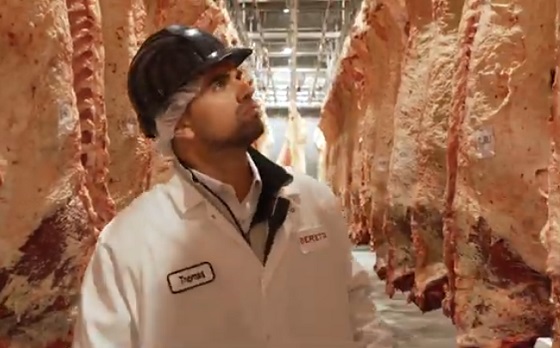Alberta
Orange Shirt Day – Acknowledging the Lasting Legacy of the Canadian Residential School System

The year 2020 marks the 24th anniversary of the final closure of the last operating Canadian residential school, located in Punnichy, Saskatchewan, in the year 1996.
Originally established in the late 1800’s, more than 130 residential schools operated across Canada for over 120 years. During this time, more than 150,000 First Nations, Metis and Inuit children were forcibly removed from their homes and placed into the schools (1).
Jointly operated by the Government of Canada and religious organizations across the nation, the residential school system was a violent and corrupt approach towards the total assimilation of Indigenous children and the ultimate erasure of Indigenous culture. The methods used by the schools to pursue this goal, as officially documented by the Canadian Truth and Reconciliation Commission (CTRC), were abhorrent acts of violence and humiliation against children that would raise a legacy of trauma and pain spanning generations.
The exact number of children who died during their time at the residential schools remains unclear, but is estimated to be greater than 6000 (2). The CTRC documents that many students succumbed to disease and malnourishment exacerbated by abysmal living conditions, while others died as a result of abuse. Records show many children perished in fires when a number of schools burned down over the years, and others died by suicide, or while trying to escape (3).
“Children were abused, physically and sexually, and they died in numbers that would not have been tolerated in any school system in the country, or in the world.” – Summary of the Final Report of the Truth and Reconciliation Commission of Canada (4)
Since the final closure of the residential schools in 1996, steps towards national reconciliation – such as the launch of the Canadian Truth and Reconciliation Commission in 2008 – have been based in the acknowledgement and commemoration of the painful legacy of the schools across Canada. The documentation, preservation and dissemination of the residential school experience as told by the survivors is essential to understanding and accepting the implications of this dark and extensive period in Canadian history.
Among many ongoing discussions and dedications to the survivors and victims of the Canadian residential Schools, Orange Shirt Day is an annual recognition of the ongoing pursuit of reconciliation and affirmation in Canada.

Orange Shirt Day was born in Williams Lake, BC in May 2013 as a legacy of the St. Joseph Residential School Commemoration Project and Reunion. The project was founded by former student Esketemc (Alkali Lake) Chief Fred Robbins in an effort to bring together those whose lives had been negatively impacted by the schools. Specifically, “Events were designed to commemorate the residential school experience, to witness and honor the healing journey of the survivors and their families, and to commit to the ongoing process of reconciliation” (5).
Orange Shirt Day was founded as a result of the St. Joseph project, when former student and spokesperson for the Reunion group, Phyllis (Jack) Webstad, shared the experience of her first day at the residential school, “when her shiny new orange shirt, bought by her grandmother, was taken from her as a six-year old girl” (6).
September 30th was chosen as the annual Orange Shirt Day to coincide with the returning school year, and to commemorate the time of year in which children were originally taken from their homes to attend the residential schools.

On September 30, 2019, The National Centre for Truth and Reconciliation (NCTR) hosted a ceremony in honor of Orange Shirt Day at the Canadian Museum of History in Gatineau, Quebec. A list commemorating the names of 2,800 Indigenous children who died while attending the residential schools was presented on a 50-metre-long-ceremonial cloth. This ceremony represented an important first step, according to the NCTR, however, there is still a long way to go towards the proper recognition and memorialization of all who were lost to the schools.
Since 2013, Orange Shirt Day has continued to foster ongoing investigation and dialogue surrounding the history and lasting legacy of the residential school system within the Canadian historical landscape. It is a public call to listen, share, and remember those who suffered and now carry the lasting wounds of the government mandated Canadian residential school system, as well as those who never returned home at all.
For more stories, visit Todayville Calgary.
Agriculture
Lacombe meat processor scores $1.2 million dollar provincial tax credit to help expansion

Alberta’s government continues to attract investment and grow the provincial economy.
The province’s inviting and tax-friendly business environment, and abundant agricultural resources, make it one of North America’s best places to do business. In addition, the Agri-Processing Investment Tax Credit helps attract investment that will further diversify Alberta’s agriculture industry.
Beretta Farms is the most recent company to qualify for the tax credit by expanding its existing facility with the potential to significantly increase production capacity. It invested more than $10.9 million in the project that is expected to increase the plant’s processing capacity from 29,583 to 44,688 head of cattle per year. Eleven new employees were hired after the expansion and the company plans to hire ten more. Through the Agri-Processing Investment Tax Credit, Alberta’s government has issued Beretta Farms a tax credit of $1,228,735.
“The Agri-Processing Investment Tax Credit is building on Alberta’s existing competitive advantages for agri-food companies and the primary producers that supply them. This facility expansion will allow Beretta Farms to increase production capacity, which means more Alberta beef across the country, and around the world.”
“This expansion by Beretta Farms is great news for Lacombe and central Alberta. It not only supports local job creation and economic growth but also strengthens Alberta’s global reputation for producing high-quality meat products. I’m proud to see our government supporting agricultural innovation and investment right here in our community.”
The tax credit provides a 12 per cent non-refundable, non-transferable tax credit when businesses invest $10 million or more in a project to build or expand a value-added agri-processing facility in Alberta. The program is open to any food manufacturers and bio processors that add value to commodities like grains or meat or turn agricultural byproducts into new consumer or industrial goods.
Beretta Farms’ facility in Lacombe is a federally registered, European Union-approved harvesting and meat processing facility specializing in the slaughter, processing, packaging and distribution of Canadian and United States cattle and bison meat products to 87 countries worldwide.
“Our recent plant expansion project at our facility in Lacombe has allowed us to increase our processing capacities and add more job opportunities in the central Alberta area. With the support and recognition from the Government of Alberta’s tax credit program, we feel we are in a better position to continue our success and have the confidence to grow our meat brands into the future.”
Alberta’s agri-processing sector is the second-largest manufacturing industry in the province and meat processing plays an important role in the sector, generating millions in annual economic impact and creating thousands of jobs. Alberta continues to be an attractive place for agricultural investment due to its agricultural resources, one of the lowest tax rates in North America, a business-friendly environment and a robust transportation network to connect with international markets.
Quick facts
- Since 2023, there are 16 applicants to the Agri-Processing Investment Tax Credit for projects worth about $1.6 billion total in new investment in Alberta’s agri-processing sector.
- To date, 13 projects have received conditional approval under the program.
- Each applicant must submit progress reports, then apply for a tax credit certificate when the project is complete.
- Beretta Farms has expanded the Lacombe facility by 10,000 square feet to include new warehousing, cooler space and an office building.
- This project has the potential to increase production capacity by 50 per cent, thereby facilitating entry into more European markets.
Related information
Alberta
Alberta Independence Seekers Take First Step: Citizen Initiative Application Approved, Notice of Initiative Petition Issued

Alberta’s Chief Electoral Officer, Gordon McClure, has issued a Notice of Initiative Petition.
This confirms a Citizen Initiative application has been received and the Chief Electoral Officer has determined the requirements of section 2(3) of the Citizen Initiative Act have been met.
Approved Initiative Petition Information
The approved citizen initiative application is for a policy proposal with the following proposed question:
Do you agree that Alberta should remain in Canada?
The Notice of Initiative Petition, application, and statement provided by the proponent are available on Elections Alberta’s website on the Current Initiatives Petition page.
As the application was received and approved prior to coming into force of Bill 54: Election Statutes Amendment Act, the Citizen Initiative process will follow requirements set out in the Citizen Initiative Act as of June 30, 2025.
Next Steps
- The proponent must appoint a chief financial officer within 30 days (by July 30, 2025).
- Once the 30-day publication period is complete and a chief financial officer has been appointed, Elections Alberta will:
- issue the citizen initiative petition,
- publish a notice on the Current Initiatives Petition page of our website indicating the petition has been issued, specifying the signing period dates, and the number of signatures required for a successful petition, and
- issue the citizen initiative petition signature sheets and witness affidavits. Signatures collected on other forms will not be accepted.
More information on the process, the status of the citizen initiative petition, financing rules, third party advertising rules, and frequently asked questions may be found on the Elections Alberta website.
Elections Alberta is an independent, non-partisan office of the Legislative Assembly of Alberta responsible for administering provincial elections, by-elections, and referendums.
-

 Alberta9 hours ago
Alberta9 hours agoAlberta Independence Seekers Take First Step: Citizen Initiative Application Approved, Notice of Initiative Petition Issued
-

 Crime8 hours ago
Crime8 hours agoNational Health Care Fraud Takedown Results in 324 Defendants Charged in Connection with Over $14.6 Billion in Alleged Fraud
-

 Health7 hours ago
Health7 hours agoRFK Jr. Unloads Disturbing Vaccine Secrets on Tucker—And Surprises Everyone on Trump
-

 Bruce Dowbiggin10 hours ago
Bruce Dowbiggin10 hours agoThe Game That Let Canadians Forgive The Liberals — Again
-

 Alberta1 day ago
Alberta1 day agoCOVID mandates protester in Canada released on bail after over 2 years in jail
-

 Business1 day ago
Business1 day agoCanada’s loyalty to globalism is bleeding our economy dry
-

 armed forces1 day ago
armed forces1 day agoCanada’s Military Can’t Be Fixed With Cash Alone
-

 Crime2 days ago
Crime2 days agoProject Sleeping Giant: Inside the Chinese Mercantile Machine Linking Beijing’s Underground Banks and the Sinaloa Cartel






